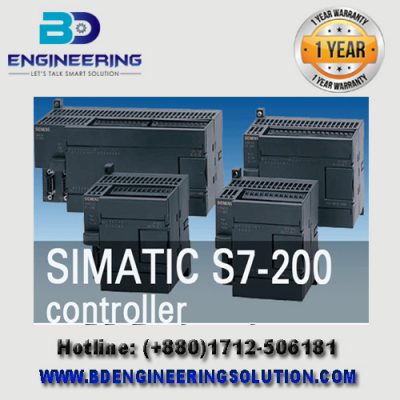Analog and Digital plc module sales & service in BD
There Analog and digital modules are components used in automation systems, particularly in programmable logic controllers (PLCs), to interface with analog and digital input/output (I/O) signals.
Analog I/O Modules:
Analog modules are working with PLC which is called from Input and output signal for machine operation. Mostly, using analog Input and digital Input which is delivery to output signal. Analog Referance value standerd.

- 0-10VDC Signal
- 0-20mA Input signal
- 4-20mA Input signal value
Digital Modules:
Digital modules, on the other hand, deal with discrete digital signals that have two states: ON and OFF. They handle binary input and output signals, typically representing the status or presence of devices or sensors. Digital input modules receive signals from devices like switches, push buttons, or limit switches, detecting their ON/OFF status and transmitting this information to the PLC.
Input Channels:
Analog modules have input channels to receive continuous analog signals, while digital modules have input channels for binary digital signals.Also, you can unlock plc program
Output Channels:
Analog modules have output channels to generate analog control signals, while digital modules have output channels for binary digital control signals. Digital output modules generate digital control signals to activate or deactivate devices like solenoid valves, relays, or indicator lights based on the PLC’s instructions.
Resolution:
Analog modules have a specific resolution that determines the level of accuracy in converting analog signals to digital data. Higher resolution allows for more precise measurements. Digital modules typically do not have a resolution since they handle binary signals.
Sampling Rate:
This affects the accuracy of the measurements. Digital modules do not have a sampling rate since they deal with discrete signals.
I/O Range:
Analog modules have a configurable input/output range to match the signal levels of the connected sensors or actuators. Digital modules typically operate with fixed voltage levels for ON and OFF states.
Communication Interface:
Both analog and digital modules communicate with the PLC’s central processing unit through a communication interface. This allows the PLC to exchange data with the modules for input acquisition and output control.
Expansion Model Digital Inputs Digital Outputs Removable Connector 6ES7 221–1BF22–0XA0 EM 221 Digital Input 8 x 24 VDC 8 x 24 VDC — Yes 6ES7 221–1EF22–0XA0, EM 221 Digital Input 8 x 120/230 VAC 8 x 120/230 VAC — Yes 6ES7 221–1BH22–0XA0 EM 221, Digital Input 16 x 24 VDC 16 x 24 VDC, 6ES7 222–1BD22–0XA0 EM 222 Digital Output 4 x 24 VDC–5A — 4 x 24 VDC–5A Yes 6ES7 222–1HD22–0XA0, EM 222 Digital Output 4 x Relays–10A — 4 x Relay–10A , 6ES7 222–1BF22–0XA0 EM 222 Digital Output 8 x 24 VDC — 8 x 24 VDC–0.75A
When selecting analog and digital modules, consider factors such as the number of channels, input/output range, resolution, sampling rate, and compatibility with your PLC system and application requirements.
